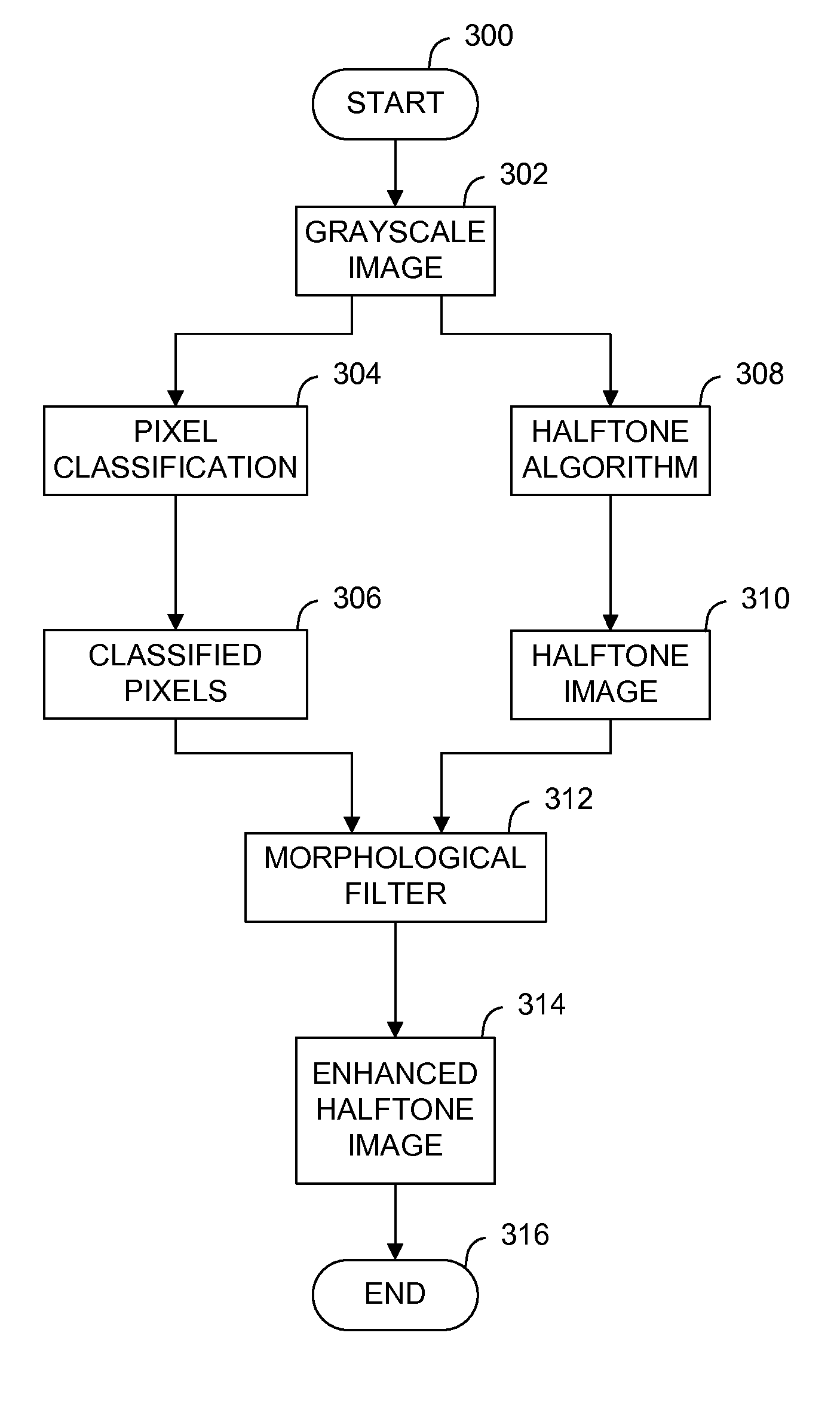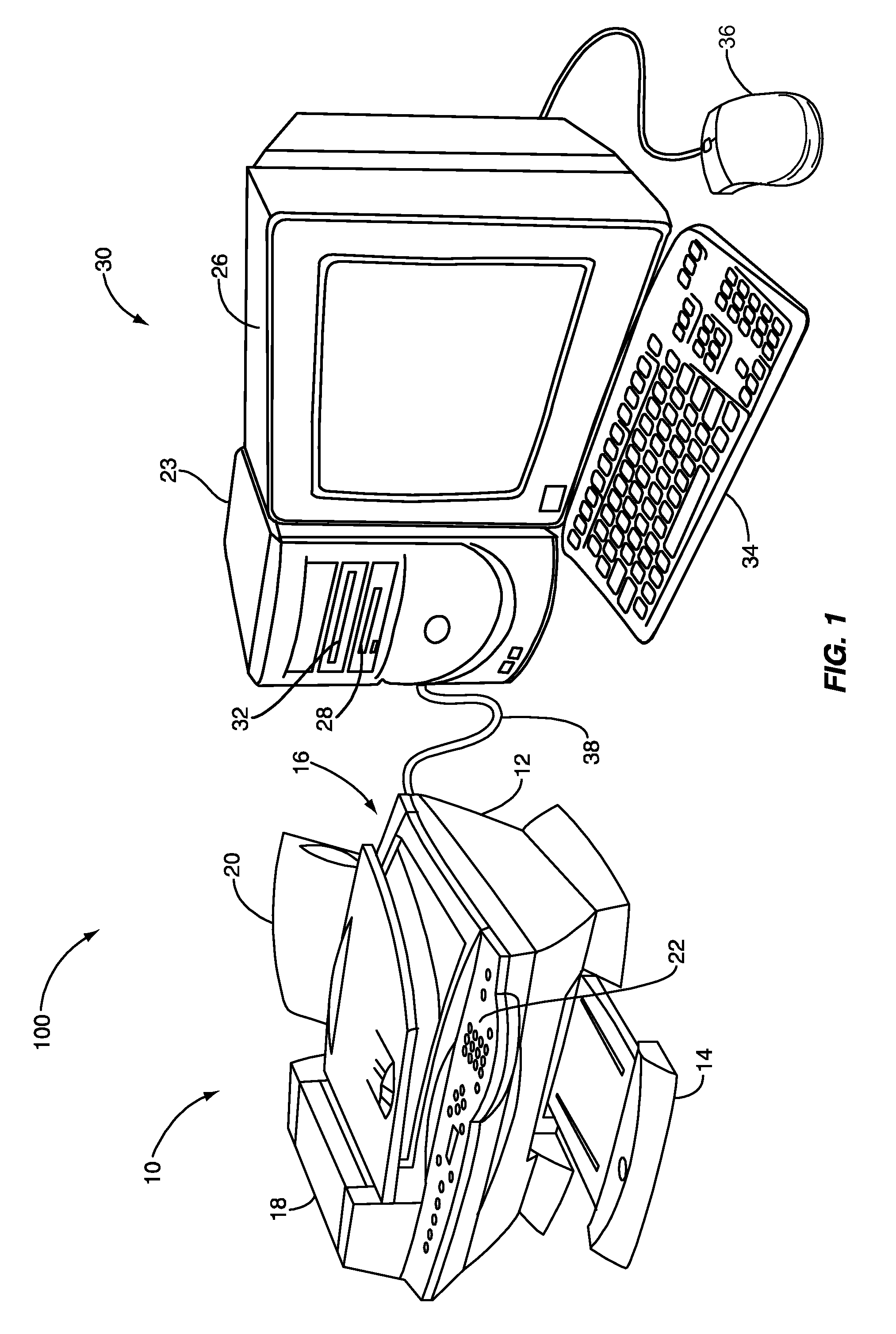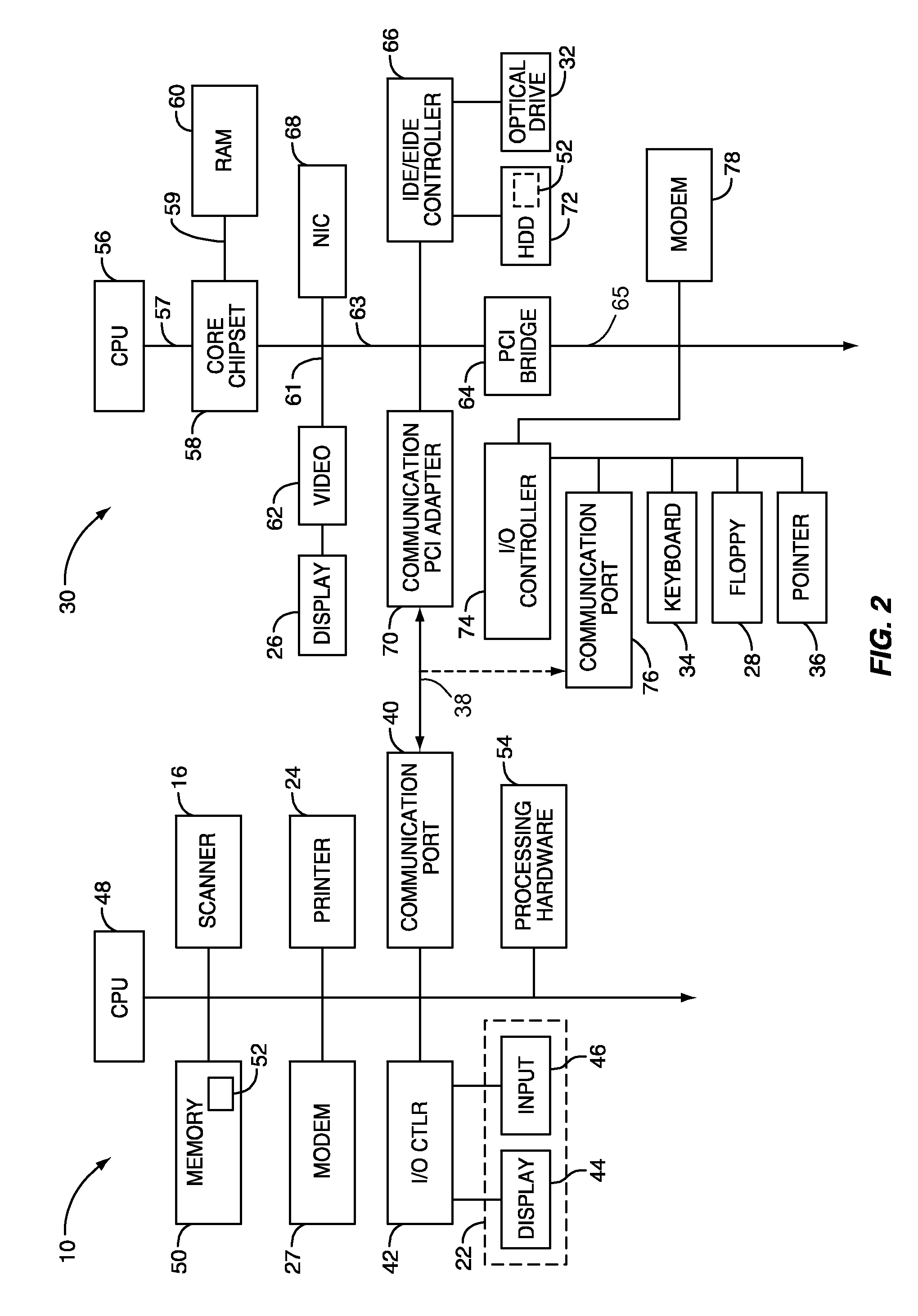Halftone edge enhancement for production by an image forming device
a technology of image forming device and halftone edge, which is applied in the field of digital image processing, can solve the problems of image quality degradation, slight bleeding or fraying effect, and problem becoming even more pronounced, so as to improve production, enhance the halftone image, and reduce the effect of halftone color depth reduction
- Summary
- Abstract
- Description
- Claims
- Application Information
AI Technical Summary
Benefits of technology
Problems solved by technology
Method used
Image
Examples
Embodiment Construction
[0028] Embodiments disclosed herein are directed to devices and methods for improving the visible quality of detailed features such as object edges that are reproduced by an image forming device. In certain instances, halftone images contain artifacts such as frayed edges that are produced as a result of a halftone process. The embodiments described below reduce or eliminate these artifacts while maintaining the overall size of objects of which the edges form a part. The processing techniques disclosed herein may be implemented in a variety of computer processing systems. For instance, the disclosed halftone edge enhancement may be executed by a computing system 100 such as that generally illustrated in FIG. 1. The exemplary computing system 100 provided in FIG. 1 depicts one embodiment of a representative image forming device, such as a multifunction or All-In-One (AIO) device, indicated generally by the numeral 10 and a computer, indicated generally by the numeral 30. A multifunct...
PUM
 Login to View More
Login to View More Abstract
Description
Claims
Application Information
 Login to View More
Login to View More - R&D
- Intellectual Property
- Life Sciences
- Materials
- Tech Scout
- Unparalleled Data Quality
- Higher Quality Content
- 60% Fewer Hallucinations
Browse by: Latest US Patents, China's latest patents, Technical Efficacy Thesaurus, Application Domain, Technology Topic, Popular Technical Reports.
© 2025 PatSnap. All rights reserved.Legal|Privacy policy|Modern Slavery Act Transparency Statement|Sitemap|About US| Contact US: help@patsnap.com



